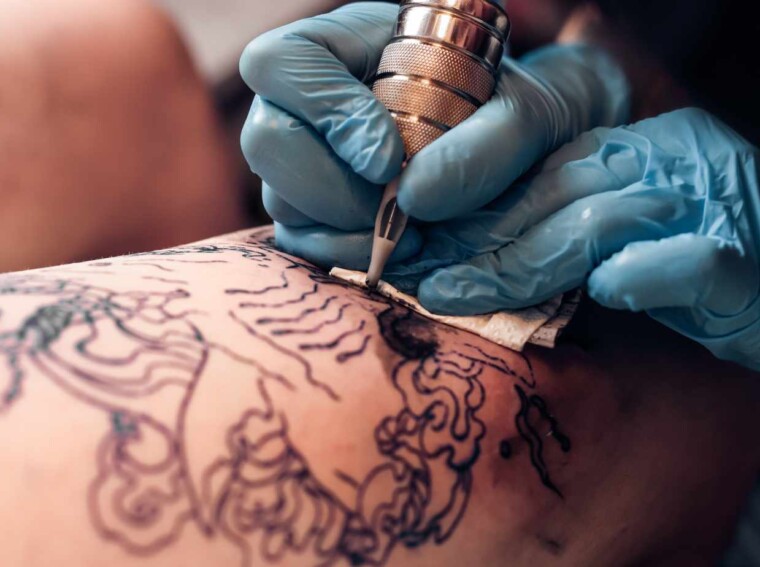Getting inked after you’ve been on blood thinners requires careful planning. Blood thinners, also known as anticoagulants, work by reducing the blood’s ability to clot. This can potentially lead to excessive bleeding during a tattoo session, which is why it’s crucial to understand how long you need to wait after stopping your medication before getting a tattoo.
As an expert blogger in health and wellness, I’m here to provide some insights into this topic. Generally speaking, it can take around 2-3 days for the effects of short-acting blood thinners like Heparin or Enoxaparin (Lovenox) to wear off. On the other hand, Warfarin (Coumadin), a long-acting blood thinner, might require a waiting period of roughly 5 days.
However, everyone’s body reacts differently and metabolism rates vary significantly among individuals. Therefore, it’s always best practice to consult with your healthcare provider before making any decisions about discontinuing medication for something like a tattoo. Regular check-ups and monitoring are key when dealing with medications that have significant impacts such as blood thinners.
How Long After I Stop Taking Blood Thinners Can I Get a Tattoo?
Let’s dive right into the topic at hand. So, you’re on blood thinners and thinking about getting inked. You might be asking yourself “how long after I stop taking blood thinners can I get a tattoo?” Well, don’t worry. We’ve got you covered!
What Are Blood Thinners and How Do They Work?
Firstly, it’s essential to understand what blood thinners are and how they work. These medications, often prescribed to prevent strokes and heart attacks in high-risk patients, decrease your blood’s ability to clot. The two main types of blood thinners are anticoagulants like warfarin or heparin, which slow down your body’s process of making clots; and antiplatelet drugs like aspirin which prevent platelets from clumping together to form clots.
How Long to Wait for a Tattoo After Stopping Blood Thinners?
Now let’s address the primary concern: how long should you wait before getting that desired tattoo? While there isn’t a one-size-fits-all answer as each person reacts differently to medication, most experts advise waiting at least 48-72 hours after stopping your medication before undergoing any procedure that could cause bleeding—including getting a tattoo.
However, this is merely an estimation—individual circumstances may vary widely. It’s crucial that you consult with your healthcare provider or pharmacist before making any decisions regarding your treatment regime.
Potential Risks of Getting a Tattoo While on Blood Thinners
But why all this caution? Well, being on blood thinning medication can pose some serious risks when it comes to tattoos. These include:
- Increased bleeding: Tattoos require puncturing the skin multiple times with a needle which naturally causes some bleeding. If you’re on blood thinning medication, this could lead to more extensive and prolonged bleeding.
- Delayed healing: Blood thinners can also slow down the body’s ability to heal wounds. This could potentially lead to longer healing times for your tattoo, increasing the risk of infection or other complications.
- Altered ink dispersal: Some anecdotal evidence suggests that blood thinners might affect how the tattoo ink spreads in your skin, possibly leading to a less-than-perfect result.

Potential Risks and Complications of Tattoos After Blood Thinners
If you’re considering getting a tattoo after stopping blood thinners, it’s important to understand the potential risks and complications. I’ve compiled a list of key points to bear in mind.
Firstly, there may be an increased risk of bleeding during the tattooing process. Even after stopping your blood thinner medication, there’s a period where your body is still adjusting. This could result in greater blood loss than what would typically be seen during a tattoo session.
Secondly, there’s the potential for bruising or hematoma formation. When you’re on blood thinners, your body’s ability to form clots is hindered – this doesn’t just go away as soon as you stop taking them. If your body isn’t able to clot efficiently at the time of getting the tattoo, it might lead to excessive bruising or even a hematoma (a localized collection of blood outside the vessels).
Thirdly, healing could take longer than usual. Wound healing involves several stages including inflammation and remodelling which can all be affected by changes in your coagulation system.
Lastly but certainly not least, remember that everyone responds differently to discontinuing medications and procedures like tattoos. It’s possible that you might have an entirely unique response compared with others who’ve been through similar experiences!
- Increased risk of bleeding
- Potential for bruising or hematoma formation
- Prolonged healing time
- Individual responses may vary
In conclusion, while it’s generally safe to get a tattoo after stopping blood thinners – provided enough time has passed – there are potential risks involved that should not be taken lightly. Consultation with both your healthcare provider and professional tattoo artist is strongly recommended before making any decisions.

